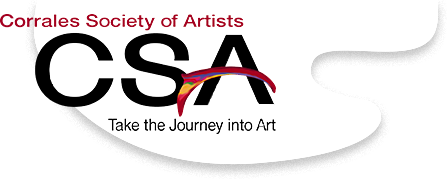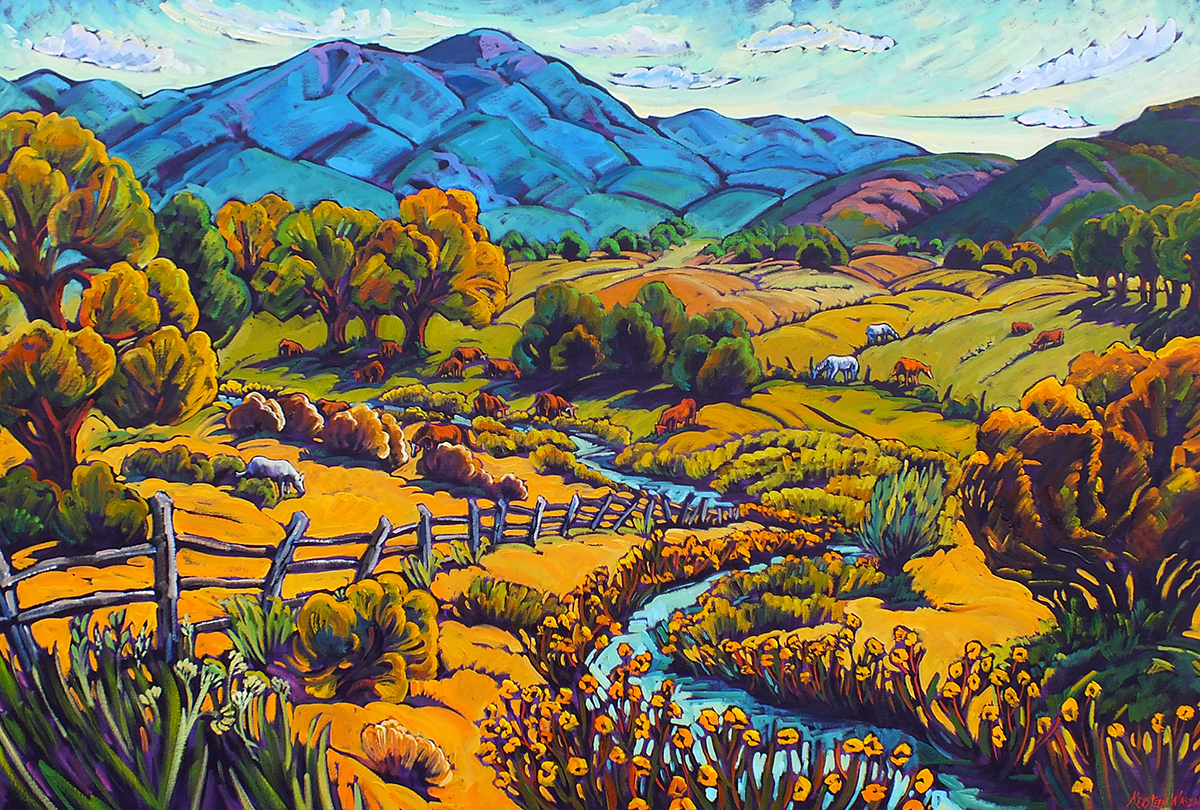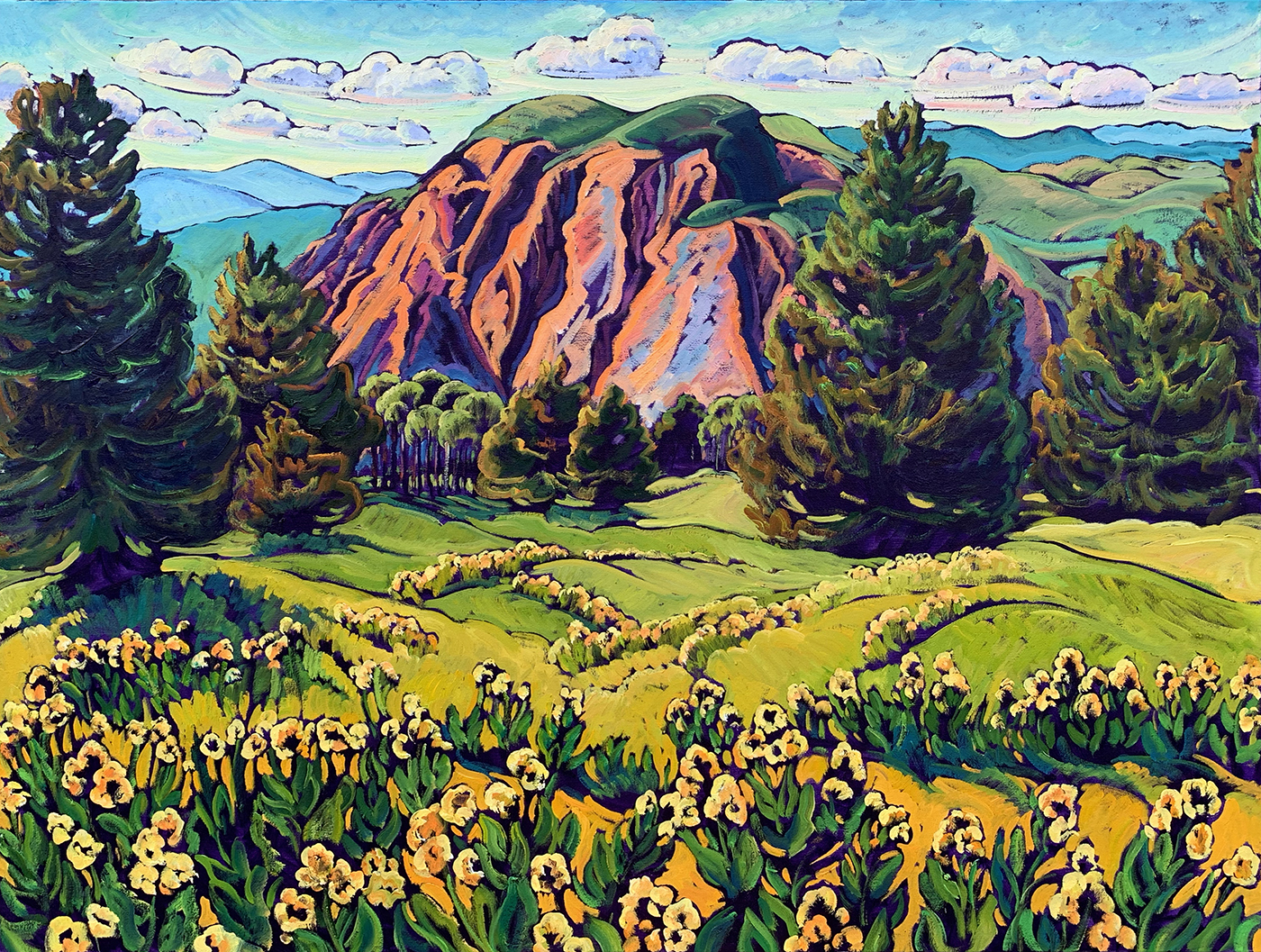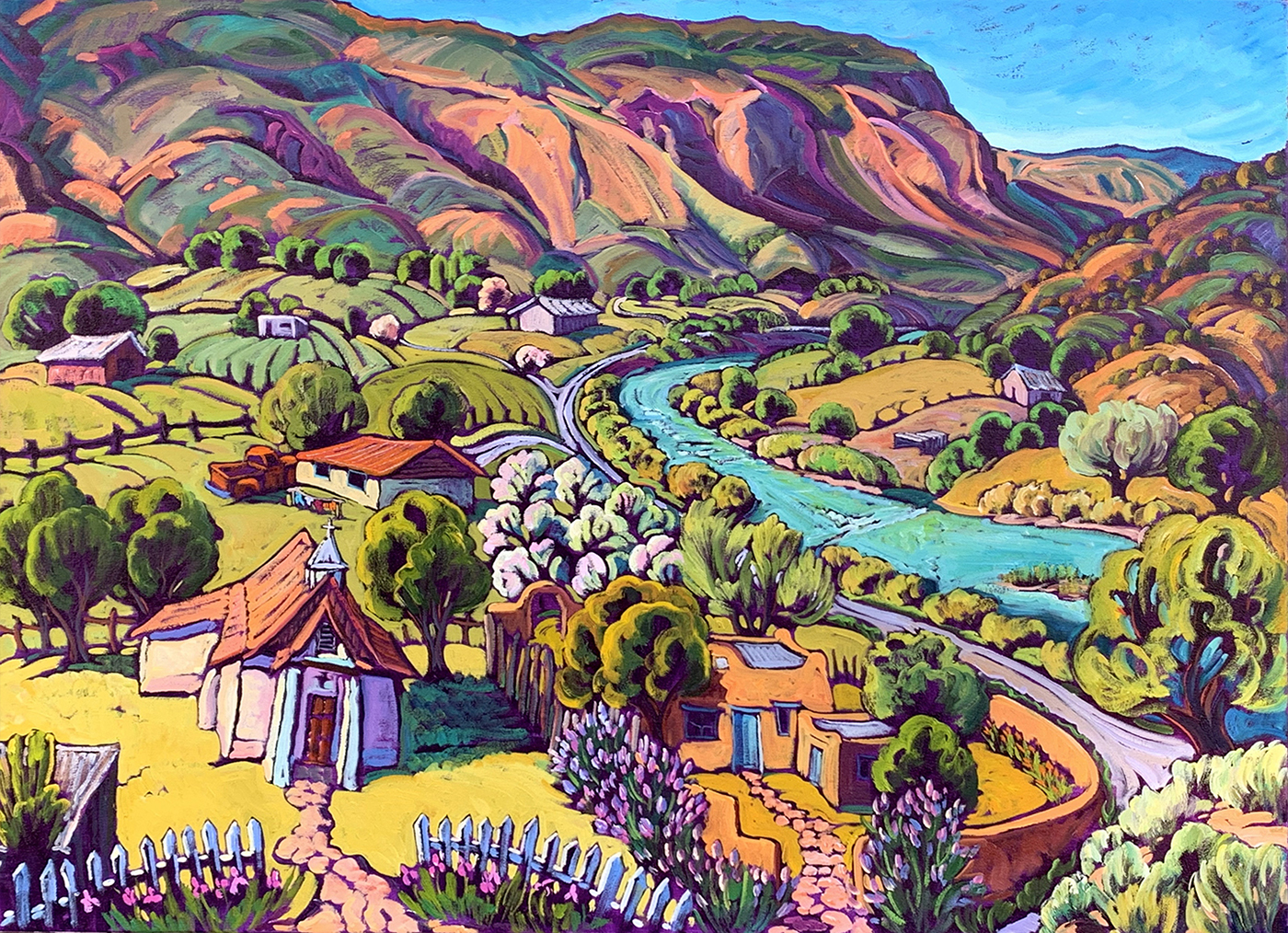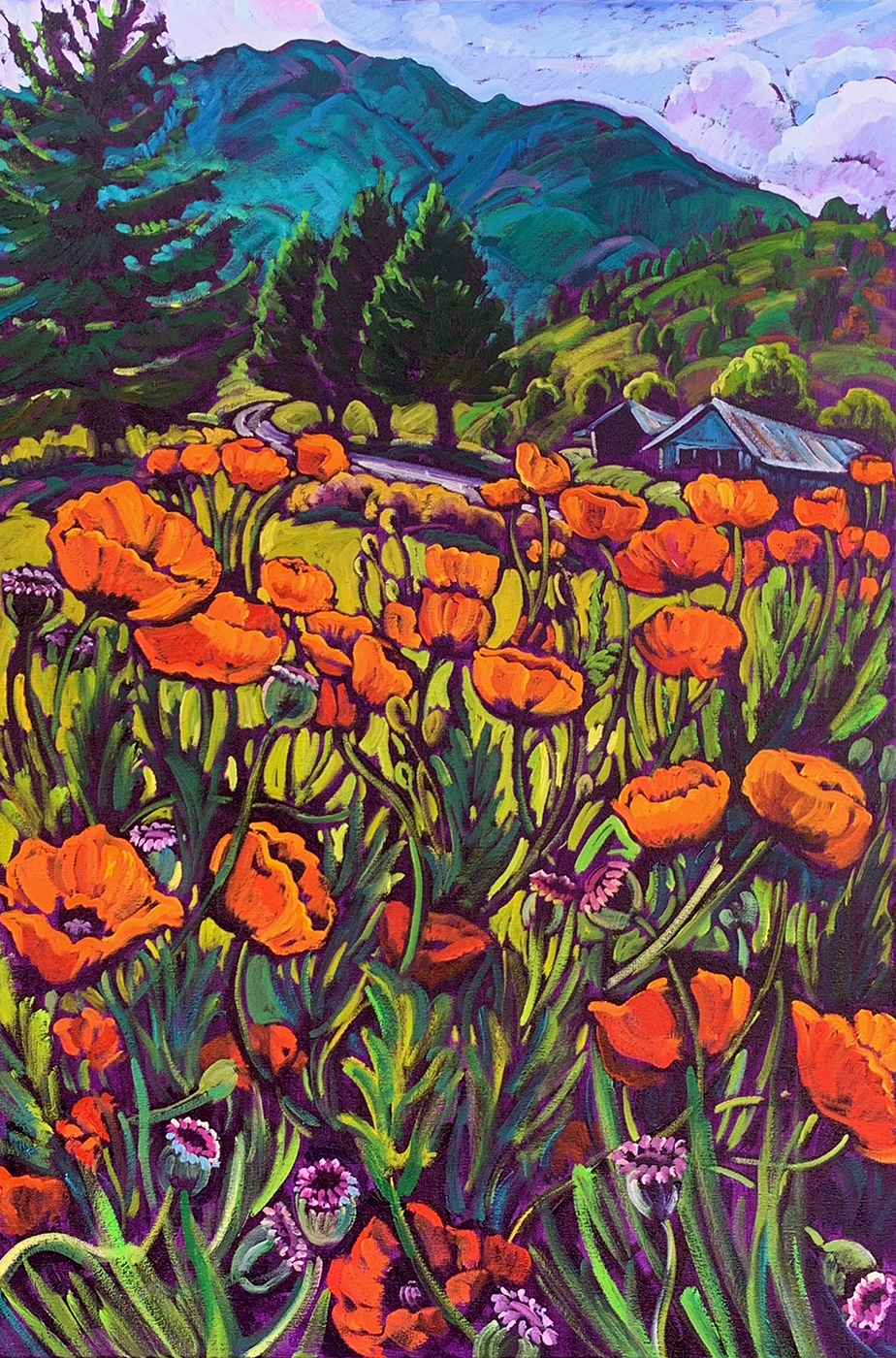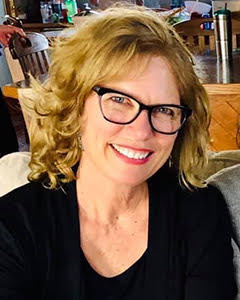
Describe your primary medium and describe why you’ve chosen it for your artwork.
My primary medium is oil painting on canvas with a focus on beginning my paintings outdoors on location, ‘en plein air’. I enjoy the extra challenges of ever-changing light and conditions to keep my attention sharp, loose and innovative.
When did you start working with this medium? How did you get introduced to this medium?
As a lifelong artist, oil painting outdoors suits my personality of exploring, wandering backroads, observing and being inspired by nature and cultural lifestyles.
Did you teach yourself or do you have a formal education?
I have both a self-taught education and an advertising art, illustration and design degree. I also like to note, my grandfather had a small advertising business in Cleveland Ohio, he mastered several fine art and commercial mediums. It was magical to go to my grandparents’ home and always be handed a brand-new set of oil pastels and papers to play with. Absorbing precise and correct art early on was very informative for me
Have you always worked with this medium? What other media have you used?
I have explored many other mediums, much of my art-making was a prolific painter and woodcarver of the Southwest Style Folk Art Painted Furniture that was popular in the 1990’s. I had free rein to brightly paint, carve and decorate the furniture as I liked. This gave me a self-taught and confident background in design, color theory, color mixing, a loose fun painting stoke and a fondness for a touch of whimsy.
How much time do you devote to your artwork?
I am a full-time working self-represented artist. While I am passionate about and keep my painting a priority, much of my time is also absorbed by the ‘business’ of my work. I show my work at art festivals and studio tours, sales are attended to, studio visits are accommodated, keeping my website and marketing updated is crucial, framing is important, I like my studios clean, my equipment repaired, and some days packing a painting so it is safe to travel across the country is the only order of business. It’s a full schedule.
What is the most rewarding aspect of what you do?
I believe the most rewarding aspect of what I do has been to create a lifestyle that supports my work and vice versa. It has never been an easy route; I do find it meaningful and rewarding. I am continually grateful to do what I do.
What are your sources for ideas and inspiration?
I am inspired by walking out the door in the beautiful Land of Enchantment. Sunrises, sunsets, skies, clouds, mountains, high desert, cultural lifestyles, and so much more. The more I travel, I think the whole Earth Globe is pretty grand and inspiring except where it isn’t, ie usually man-made scarring and exploitation.
What obstacles do you encounter as an artist? How do overcome challenges?
This makes me chuckle, the obstacles in art making are too many to list. I’ve had them all, failed paintings and art endeavors, mental insecurities, physical breakdowns, outside forces, a general balancing of work and life that all of us experience and even great successes have their challenges. I remind myself it’s a long art game that I am engaged in. The big picture, if you will, is a passionate and fulfilling way to make my living and express myself through my painting. I move on and am always grateful with a healthy dose of crabbing about everything along the way.
Do you know what the finished artwork is going to be when you start? Do you ever just work from spontaneous impulse?
No, I never know how a painting will turn out, frankly, I routinely fall short of what my mind’s eye paints, to be fair, sometimes I mildly surprise myself. Over the years I have learned to manage and allow for my creative processes which have many twists, turns, ups and downs. I keep in mind to allow the painting to emerge, that often means getting out of the way. I call it getting comfortable with being uncomfortable while I create. There may be a lot of in-fighting within myself while I push through a piece, not paying attention to negative thoughts helps, stepping away from the canvas allows for me to be objective so I can return to work with what I have. My paintings are large, each one different, they require hours of work and involve a lot of stages. Congruently, I am never happier than when I am painting. All this keeps me engaged to paint better the next time, there is always the next time.
Do you have a philosophy about producing art?
What I think about creating art today is not what I thought yesterday or will think tomorrow, it’s ever-changing. I do know, what is best for me is to show up at my easel and get to work, maybe that’s my philosophy.
Do you collaborate with other artists and if so, how does that happen?
I wouldn’t say I collaborate with other artists, I paint out with painters, I teach a little bit, and admire all kinds of artists, their work and processes.
Do you show your work commercially? If so where? Do you produce your art for a living or is it more of an avocation?
By my choice, I am a full time self-represented artist, I show and sell my work through art festivals, studio tours, in person and online. I need a lot of creating time, I often say, these paintings don’t get made unless I make them, this requires me to drive off for a day of plein air or retreat back in my studio to get quiet and focused to finish pieces. It is a constant balancing act of tasks to complete.
What advice would you give aspiring artists entering the field?
Being a creator is such a rewarding way to live your life. I don’t believe you need a fancy art education, you do need to build confidence by learning solid art principles, explore many mediums, get your hands dirty, make mistakes, learn from them, move on, work as much as you can when you can, for life does need to be lived outside of an art career. Take your own work very seriously, yourself less so, be kind to your young artist self and stern with your developing artist self. Practice. If you are going to sell your art, learn good business practices. Let no one dictate to you what, where or how you should be in your journey. Being authentic and honest helps you to find and trust your voice, then be loud about it. Be brave, go all in, own it, leave no room for regrets.
What else do you want to say to help introduce you and your work to our readers?
I have probably said enough. My goal is that a reader can look at my work, see my passion for painting and a love of my subject. Basically, if you listen to my semantics, I love my work. That’s all.
